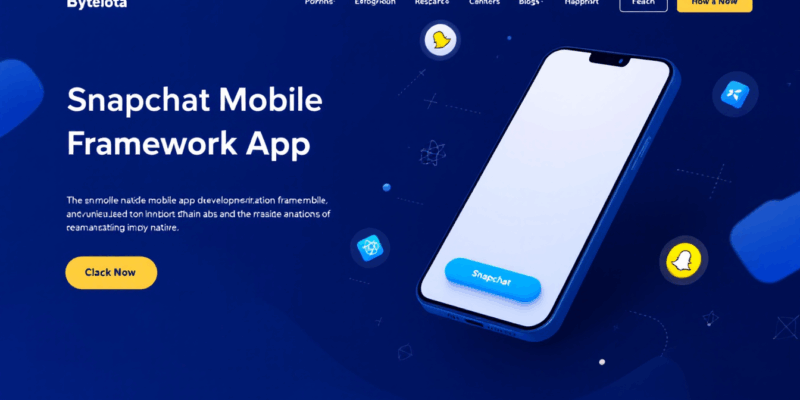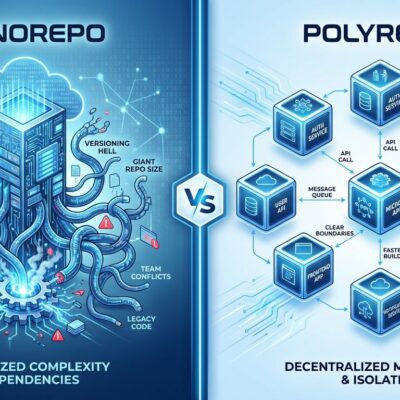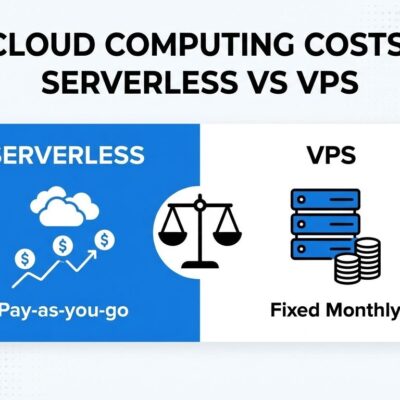
Snapchat just open-sourced Valdi, a cross-platform UI framework the company has trusted in production for eight years. Released November 6, 2025, Valdi compiles TypeScript directly to native iOS and Android views—no JavaScript bridge, no web views, no custom rendering engine. While React Native and Flutter dominate cross-platform development, Snapchat is betting developers will choose battle-tested technology over the current duopoly.
This isn’t another experimental framework promising the moon. It’s production-proven technology from a major tech company that chose to build their own solution rather than use React Native or Flutter. The question isn’t whether Valdi works at scale—Snapchat already answered that. The question is whether it can challenge React Native and Flutter’s massive ecosystem advantage.
True Native Performance: No Bridge, No Rendering Engine
Valdi’s architecture eliminates the performance bottlenecks that plague React Native and the non-native feel that frustrates Flutter developers. TypeScript code compiles directly to platform-native views—UIKit on iOS, Android Views on Android—through a C++ layout engine that runs on the main thread. React Native forces every UI operation through a JavaScript bridge, creating serialization overhead. Flutter renders everything on a Skia canvas, delivering fast performance but sacrificing platform-native UI conventions.
The framework includes automatic view recycling, where a global view pooling system reuses native views across all screens, dramatically reducing inflation latency. Viewport-aware rendering inflates only visible views, making infinite scrolling performant by default. Moreover, components re-render independently without triggering parent re-renders, a performance optimization that React requires manual intervention to achieve.
However, performance claims without independent benchmarks deserve skepticism. Valdi’s two-day-old release means community verification is still pending. The architecture suggests performance advantages are real, but developers should wait for real-world comparisons before making migration decisions.
The 8-Year Production Proof
Valdi has powered Snapchat’s production apps for eight years, handling complex animations, real-time rendering, and advanced gesture systems. The framework isn’t experimental—it’s battle-tested at scale. Snapchat calls this a “beta” release, but they’re clear about what that means: “We’re calling this a beta because our tools and documentation need more battle testing in the open source world.” The technology is proven. The open source developer experience is not.
Framework graveyard is littered with projects abandoned after 18 months. Consequently, Snapchat’s eight-year investment answers the biggest question about any new framework: “Will this still exist in two years?” For Valdi, the answer is already yes. Furthermore, the framework earned 309 GitHub stars in two days and generated a 118-point Hacker News discussion, signaling strong developer interest.
Related: Dead Framework Theory: Why Your Tech Stack Keeps Dying
Yet production longevity at Snapchat doesn’t guarantee sustained open source commitment. Developers need evidence that Snap will actively maintain the project, ship the promised component library, and build the ecosystem required to compete with React Native’s massive third-party landscape.
TypeScript, Hot Reload, and Full VSCode Debugging
Valdi targets developers frustrated with native’s slow compile cycle or cross-platform’s compromises. Instant hot reload delivers changes in milliseconds across iOS, Android, and desktop without recompiling. Additionally, full VSCode debugging enables breakpoints, variable inspection, performance profiling, and heap dumps through the Hermes debugger. TypeScript 5.x provides type safety, and flexible adoption allows embedding Valdi components in existing native apps.
The framework uses TSX syntax familiar to React developers. A basic component demonstrates the approachability:
import { Component } from 'valdi_core/src/Component';
class HelloWorld extends Component {
onRender() {
const message = 'Hello World! 👻';
<view backgroundColor='#FFFC00' padding={30}>
<label color='black' value={message} />
</view>;
}
}Polyglot modules let developers write performance-critical code in C++, Swift, or Kotlin with type-safe TypeScript bindings. Worker threads enable background processing. In addition, built-in testing and Bazel integration support production workflows. For TypeScript shops wanting cross-platform mobile development without learning Dart or fighting bridge complexity, Valdi’s developer experience competes directly with established alternatives.
Can a Late Entrant Challenge the Duopoly?
Valdi enters a market dominated by React Native (Facebook/Meta) and Flutter (Google). React Native offers a massive ecosystem, extensive component libraries, and years of community momentum. Flutter delivers beautiful UI, strong Google backing, and mature tooling. Valdi offers TypeScript familiarity, true native views, and eight years of production proof. However, the ecosystem is microscopic—no third-party components, limited community support, and uncertain long-term commitment from Snapchat.
The timing question matters. Why open source after eight years? Possible motivations include ecosystem building (more developers contribute improvements), recruiting (attract developers who love the tech), competitive positioning (reduce React Native/Flutter lock-in), or transparency (demonstrate Snap’s engineering quality). Developer adoption depends on whether Snapchat actively invests in ecosystem growth or treats this as a one-time code dump.
Small teams can’t afford to bet on frameworks that might become abandonware. Large teams won’t switch from React Native’s proven ecosystem for marginal gains. Therefore, Valdi’s opportunity is the frustrated middle: TypeScript developers tired of React Native’s bridge overhead or Flutter’s Dart requirement who value battle-tested technology over cutting-edge features. That’s a real market, but it’s not a React Native killer.
Key Takeaways
- Valdi compiles TypeScript directly to native views, eliminating React Native’s JavaScript bridge and Flutter’s custom rendering engine
- Eight years in Snapchat production proves the technology works at scale, answering framework longevity questions before launch
- Developer experience competes with established alternatives—instant hot reload, full VSCode debugging, TypeScript familiarity, flexible adoption
- Tiny ecosystem compared to React Native and Flutter creates real adoption risk despite technical advantages
- Worth watching if you’re in TypeScript or frustrated with current options, but wait for community benchmarks and signs of sustained Snapchat investment before betting your next project on it
Framework wars benefit developers through competition. Valdi forces React Native and Flutter to justify their architectural choices. Whether it becomes a mainstream alternative or remains a niche tool depends on Snapchat’s willingness to build an ecosystem, not just release code.










